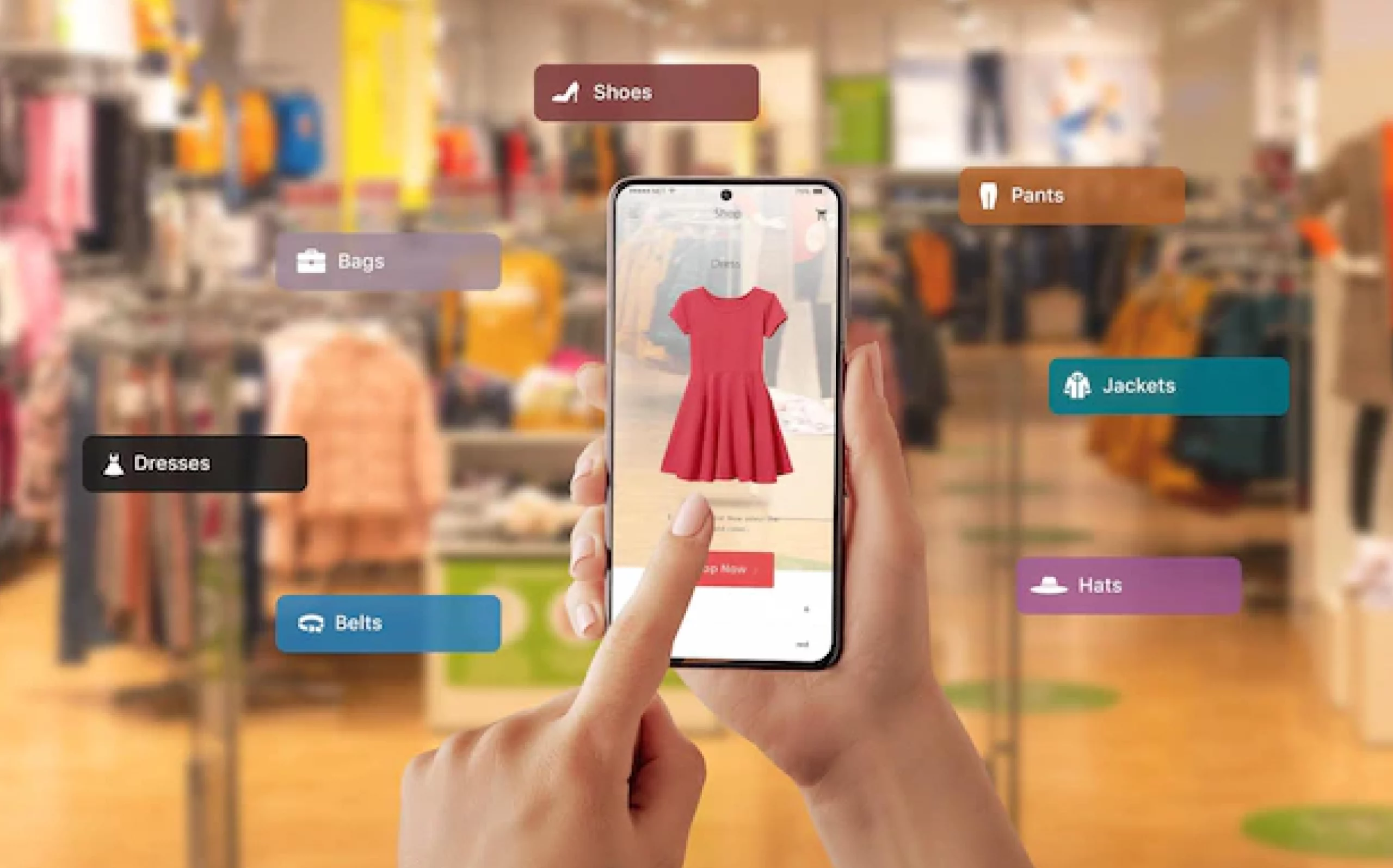Fashion and Augmented Reality (AR) on 2024: Revolutionizing Virtual Try-Ons and Shopping Experiences – In the ever-evolving landscape of fashion and technology, the integration of Augmented Reality (AR) has emerged as a game-changer. Particularly in the realm of virtual try-ons and shopping experiences, AR is reshaping how consumers interact with fashion in the digital space. In this article, we explore the dynamic synergy between fashion and AR, unraveling the impact of augmented reality on virtual try-ons and the overall shopping journey.

1. AR Defined: Enhancing Reality with Digital Layers
Augmented Reality (AR) enriches the real-world environment by overlaying digital information and elements onto it. In the context of fashion, AR adds a virtual layer to the physical world, creating interactive and immersive experiences for consumers.
2. Virtual Try-Ons: Trying Before Buying in the Digital Realm
Virtual try-ons represent one of the most transformative applications of AR in fashion. Consumers can virtually try on clothing, accessories, and even makeup using AR-powered applications. This technology enables users to visualize how items will look on them before making a purchase, reducing uncertainties associated with online shopping.
3. AR Mirrors: Reflecting Digital Fashion in Physical Spaces
AR mirrors bring the virtual try-on experience to physical retail spaces. These mirrors use AR technology to superimpose digital images of clothing onto the reflection of the shopper, allowing them to see how different outfits look without physically changing clothes. This blending of digital and physical enhances the in-store shopping experience.
4. Interactive Product Visualization: Unveiling Details Digitally
AR enables interactive product visualization by providing consumers with detailed digital information about fashion items. For example, users can point their smartphones at a product, and AR overlays details such as fabric composition, available colors, and styling options, creating a more informed and engaging shopping experience.
5. AR in E-Commerce: Bridging the Gap Between Screens and Reality
E-commerce platforms are leveraging AR to bridge the gap between the digital and physical realms. AR try-on features on websites and mobile apps allow users to virtually wear items before adding them to their cart. This minimizes the uncertainty associated with online shopping and enhances the overall digital shopping experience. (Read More : 10 Difference Fashion and NFTs: Unveiling the Intersection of Fashion and Blockchain)
6. Customization and Personalization: Tailoring Virtual Try-Ons

AR is empowering brands to offer personalized and customized virtual try-on experiences. Users can adjust virtual clothing items to fit their preferences, exploring different styles, patterns, and sizes in real-time. This level of customization adds a new dimension to the virtual try-on process, catering to individual tastes and preferences.
7. AR and Social Media: Sharing Virtual Fashion Moments
Social media platforms are integrating AR into the fashion discourse. Users can share their virtual try-on experiences with friends and followers, creating a social aspect to the digital fashion journey. This interactive sharing not only enhances engagement but also turns virtual fashion into a communal experience.
8. AR Filters and Accessories: Digital Style Enhancements
AR filters and accessories have become popular tools for digital styling on social media platforms. Users can apply AR filters that simulate makeup looks, hairstyles, or even virtual accessories, allowing for playful and creative self-expression in the digital space.
9. Improved Decision-Making: Minimizing Returns and Increasing Satisfaction
The implementation of AR in virtual try-ons contributes to more informed decision-making by consumers. By virtually trying on items, users can better assess how the clothing fits their body shape and personal style, potentially reducing the likelihood of returns and increasing overall satisfaction with their purchases.
10. Future Trends: AR Continues to Shape the Fashion Landscape
As technology advances, the future holds even more innovative applications of AR in the fashion industry. From enhanced virtual fitting rooms to interactive fashion shows in AR, the continued integration of augmented reality promises to redefine how we experience and engage with fashion in both physical and digital spaces.
Conclusion article Fashion and Augmented Reality (AR) on 2024
In conclusion, the fusion of fashion* and augmented reality is forging an exciting path towards a more immersive, interactive, and personalized consumer experience. Virtual try-ons powered by AR are not just tools for mitigating the challenges of online shopping; they are transformative elements that bring the digital and physical aspects of fashion closer together. As AR continues to shape the future of fashion, it opens new possibilities for creativity, exploration, and a seamless blend of the tangible and the virtual in the ever-evolving world of style.
Read More: Digital Fashion Shows and Virtual Runways on 2024: Shaping the New Normal





3 thoughts on “Fashion and Augmented Reality (AR) on 2024: Revolutionizing Virtual Try-Ons and Shopping Experiences”
Comments are closed.